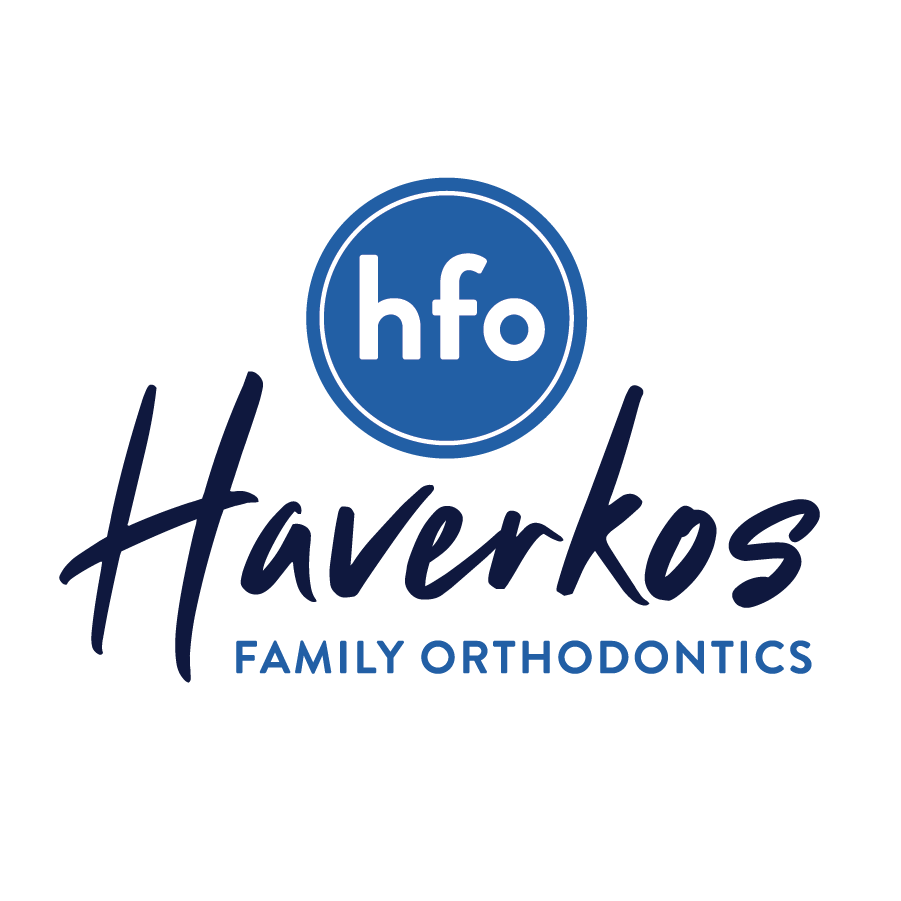Inspire Ice™
Inspire Ice braces are created from extremely strong clear sapphire and are a more aesthetically pleasing alternative to traditional braces.
HAVERKOS & REDDY ORTHODONTICS Accessibility Statement
HAVERKOS & REDDY ORTHODONTICS is committed to facilitating the accessibility and usability of its website, reddyhaverkosorthodontics.com, for everyone. HAVERKOS & REDDY ORTHODONTICS aims to comply with all applicable standards, including the World Wide Web Consortium's Web Content Accessibility Guidelines 2.0 up to Level AA (WCAG 2.0 AA). HAVERKOS & REDDY ORTHODONTICS is proud of the efforts that we have completed and that are in-progress to ensure that our website is accessible to everyone.
If you experience any difficulty in accessing any part of this website, please feel free to call us at 513-481-8000 or email us at info@hr-ortho.com and we will work with you to provide the information or service you seek through an alternate communication method that is accessible for you consistent with applicable law (for example, through telephone support).
Inspire Ice braces are created from extremely strong clear sapphire and are a more aesthetically pleasing alternative to traditional braces.

Monday: 7:30am – 4:30pm
Tuesday: 12pm – 6pm (school year) 8am – 2pm (summer)
Wednesday: 7:30am – 4:30pm
Thursday: 7:30am – 4:30pm
Friday: 10:00am – 2:00pm
Tel: (513) 481-8000
Fax: (513) 481-6203
info@hfortho.com
5754 Bridgetown Rd.
Cincinnati, OH US 45248
In addition to avoiding certain foods, it is also important to avoid bad habits that can break or damage your braces. Fingernail biting, pencil and pen chewing, or chewing on any foreign objects should all be avoided.
It’s important to regularly inspect your braces for bent or lose wires and brackets. If you have a loose/broken wire or bracket, please call our office immediately to arrange a repair appointment and check our emergency page for tips on temporary repairs.
We recommend that you brush with a fluoride toothpaste at least two times per day (preferably after meals), for at least two minutes each time. Remember to brush all of the teeth surfaces: the outside, the inside, and the chewing surfaces. Be especially careful to clean the areas between wires and teeth, and between brackets and gums, that’s where food particles can easily become trapped.
Here’s a suggested brushing technique: Begin at the outside surfaces, place the tips of the bristles flat against your teeth, and use small circular motions to gently polish the area clean. For areas between braces and gums, tilt the brush toward the gum line (down for the bottom teeth, up for the top) while keeping up the circular motions. Next, move on to the chewing surfaces of upper and lower teeth, using a firm back-and-forth motion. Finally, finish up by carefully brushing the inside surfaces of the teeth the same way you did the outside surfaces.
If you’re having trouble cleaning the areas near brackets and wires, there are some special tools that can make the job easier. One is the interdental toothbrush or proxabrush. It has a small tuft of bristles that stick up all around, like a pipe cleaner. Use it gently and carefully to clean the tiny spaces under wires and around bands and brackets.
Another special cleaning tool is the oral irrigator or “water pick.” This device shoots a small stream of pressurized water at your teeth, which can help dislodge bits of food that become trapped in nooks and crannies. While it’s easy to use, an oral irrigator isn’t a substitute for a toothbrush or dental floss. The oral irrigator is meant to be used along with proper brushing and flossing techniques and it can be very effective.
In order to keep your teeth and gums clean and healthy, you need to floss at least once per day. Now, how do you get floss under the archwire of your braces? You can use a floss threader to complete the task. You pull one end of floss through the threader and then push the threader under the archwire. Then, you pull the floss on each end and slide it up and down the sides of both teeth, and all the way under the gums until you hear a squeaky sound, this is the indicator that the area is clean. Finally, pull it out, toss it, and use a new section of floss for the next area.
There’s an accurate way to tell how effective your cleaning techniques are. There are special vegetable dyes called “disclosing solutions” or “disclosing tablets” that highlight plaque and food debris that brushing has missed. You can then easily remove the dyed spots. This exercise will highlight any areas of opportunity for your brushing and flossing techniques.
Keeping your teeth and gums healthy now is an investment in your future. Maintaining good oral health will allow you to get the best results from your orthodontic treatment.
Retention typically involves wearing an orthodontic appliance called a retainer and it is a critical part of your treatment plan. Several different kinds of retainers are available, all of which are custom-made just for you. We will recommend the type (or types) that will work best in your individual case.
Teeth aren’t set rigidly in the jawbone, they’re held in place by a network of fibers called the periodontal ligaments. After your teeth have been moved, it takes several months for the periodontal ligament to adjust to the new position. In order to keep your newly straight smile, it’s essential to wear your retainer as directed.
The same day your braces are removed, you will be fitted for a retainer. Your teeth will be thoroughly cleaned, we may take another set of X-rays and/or bite impressions, to check how well your braces worked and to see how much your wisdom teeth have developed. Then, we’ll discuss your retainer and start getting it ready.
There are three basic types of retainers available today. The most common is the “Hawley” retainer which is a thin, tongue-shaped piece of acrylic molded to fit your mouth and includes a wire that holds your teeth in position. The Hawley retainer is simple, durable and easily removed.
Another popular style of retainer is a clear aligner-type, which looks similar to the Invisalign® tray system. These retainers are custom-made of thin, transparent plastic which is designed to fit precisely over your teeth. The main advantage of this type of retainer is its virtual invisibility. However, this type of retainer is less durable than the Hawleys and is not recommended for patients who grind their teeth.
Finally, fixed retainers aren’t removable by the wearer but aren’t visible either. Like lingual braces, this system uses a wire which is bonded to the tongue side of the teeth. It may remain in place for months, or longer. This type of retainer is recommended when there’s a high risk that teeth could revert to their former position.
After a short time, most people adjust quite well to wearing a retainer. Some short-term side-effects include an increased amount of saliva production and temporary speech impairment. Be sure to take out your retainer to eat or brush your teeth, this will be a nice change from braces. Your treatment plan will include a schedule to wear your retainer which will start out as a 24/7 schedule and will slowly shift to just a few nights a week.
All retainers need proper cleaning. A Hawley-type retainer can be brushed gently with a regular toothbrush. Denture cleaners, in powder or tablet form, as well as special retainer cleaners, can be used to clean most removable retainers. Fixed retainers are cleaned by brushing and flossing; a floss threader or interproximal brush can be used when needed. Avoid excess heat from very hot water or leaving your retainer close to a heat source. The heat will warp your retainer and render it useless.
TADS (Temporary Anchorage Devices) have been around since the 1980s but are gaining widespread acceptance today. TADS are temporary, small, screw-like dental implants made of titanium alloy. They typically remain in place for some months during treatment and are then removed. TADS provide anchorage or fixed point around which teeth can be moved.
If there is not a viable tooth located at the point where an anchor is needed or a greater force is required, the teeth used as anchors can themselves start to move. TADS can help in both of these cases as they can either be the anchors themselves or provide additional support to the teeth being used as anchors.
TADS can also replace the use of uncomfortable headgear while shortening overall treatment time, eliminating the need to wear elastics (rubber bands), and sometimes even make certain oral surgeries unnecessary.
Placing and removing TADS is a minimally-invasive, pain-free procedure. After the area being treated is numbed, a patient will only feel gentle pressure as the device is inserted. The whole process takes just minutes to complete. And taking TADS out is even easier.
While they’re in place, TADS requires being brushed twice daily with a soft toothbrush dipped in an antimicrobial solution.
Not every orthodontic patient will need TADS but for those who do, it’s a minimally-invasive treatment option that offers some big benefits.
TMD is an abbreviation for Temporomandibular disorders and is characterized by ongoing pain in the area near your ear, your jaw, or the muscles on the side of your face. Sometimes the pain is accompanied by restricted jaw movement and a popping or clicking sounds. Sometimes people incorrectly use the term TMJ to refer to these problems, when in fact TMJ is the abbreviation for the temporomandibular joint — or jaw joint — itself.
The TMJ can be subject to orthopedic problems such as inflammation, sore muscles, strained tendons and ligaments, and disk problems. Research also shows TMD is influenced by genetic predisposition, gender (women appear to be more prone to it), and age. Physical and psychological stress is also a contributing factor.
Clicking Sounds — Some people with TMD experience a clicking, popping or grating sound coming from the TMJ when opening or closing the mouth. This can be explained by a shifting of the disk inside the joint. If the clicking is accompanied by pain or limited jaw function such as the jaw getting “stuck” in an open or closed position, for example — this would indicate TMD.
Muscle Pain — The pain may be felt in the cheeks (masseter muscles) and temples (temporalis muscles), where the two big pairs of jaw-closing muscles are located.
Joint Pain — Pain that’s actually coming from one or both jaw joints technically would be described as arthritis of the TMJ. There is no cure for arthritis anywhere in the body, but medication can sometimes help relieve arthritic symptoms.
Once we examine you, we will come up with a strategy for treating your condition and managing your pain. Your treatment plan will include one or several solutions such as a temporary change to a softer diet which can reduce stress on the muscles and joints. Ice and/or moist heat may help relieve soreness and inflammation. Muscles in spasm can also be helped with gentle stretching exercises. Non-steroidal anti-inflammatory medications and muscle relaxants can also provide relief.
Severe TMD cases may require more complex forms of treatment, which might include orthodontics, dental restorations like bridgework, or minor procedures inside the joint such as cortisone injections or lavage (flushing) of the joint. It’s rare for major surgery ever to be necessary in a case of TMD.
The first step is an examination here at our dental office. We don’t want you to be in pain, so please come in and see us. To learn more about the treatment options available, view our Chart on TMD Therapy.
The Mandibular Anterior Repositioning Appliance (MARA) is used to treat class II malocclusions. Class II malocclusions are characterized by protrusion of the upper front teeth or a lower jaw and or teeth that are positioned back in regard to the upper jaw and or teeth. Using MARA, class II malocclusions are treated more effectively and in a reduced length of treatment time.
The appliance is secured to the patient’s first molars via stainless steel crowns. The appliance cannot be removed by the patient.
The upper “elbows” can be removed, which facilitates comfort and advanced adjustments. The appliance can be advanced on one side or both sides.
Sore spots are minimal and you should be able to chew normally within two weeks. We recommend you eat soft foods initially. Do not chew on the elbows. Avoiding candy, hard foods, etc. throughout treatment to prevent breakage.
MARA is generally worn between 15 to 18 months but improvements are noticed almost immediately.
The Rapid Palatal Expander is an orthodontic device that functions to create a wider space in the upper jaw. This device is typically used when the upper jaw is too narrow for the lower jaw or when the upper teeth are crowded or blocked out of the dental arch.
When patients are young and still growing, their connective tissue between the left and right halves of their upper jaw is very responsive to expansion. The expander begins to work by simply activating it by turning a screw in the center, with a special key we provide. Gradual outward pressure is then placed on the left and right halves of the upper jaw. This pressure encourages a large amount of bone to grow between the right and left halves of the jaw, resulting in an increased width.
The Herbst appliance is used to treat a condition in which the upper teeth protrude due to the lower jaw being further back due to a delay in growth. The Herbst appliance prevents the lower jaw from moving backward while allowing opening and closing movement to occur easily. Patients typically do not have any problems learning to chew their food with their lower jaw in this new position.
There are certain foods that have to be avoided while wearing the Herbst appliance such as ice slushes, Popsicles and ice as they will freeze the cement and make the brace loosen. Sticky foods such as caramels, bubble gum, and candy suckers will pull the brace away from the teeth. Hard foods like crisp vegetables and hard candies will bend and loosen the Herbst appliance, too.
Your treatment plan with the Herbst appliance will include check-up and adjustment appointments. If you develop sore areas inside your cheeks between appointments, please give us a call rather than attempting any adjustments on your own.
At the beginning stages of wearing your Herbst appliance, your mouth will feel unusually full and speaking will be awkward. But don’t worry, you can return your regular speech pattern by reading aloud.
Invisalign® clear aligners are a popular alternative to traditional metal braces. Invisalign involves using a set of clear aligners that are made of almost invisible polyurethane plastic. The aligners are completely removable since they are not cemented or bonded to the teeth allowing you to remove them for important social occasions, eating, and, most importantly, for tooth-brushing and flossing.
Here are some other upsides of the Invisalign system:
To find out if Invisalign is right for you, schedule an appointment with Dr. Reddy & Dr. Haverkos.
Invisalign clear aligners to the same type of work as traditional metal braces which are applied carefully controlled forces to teeth to move them into the desired position. However, Invisalign aligners are made of flexible plastic instead of metal like traditional braces.
Here’s how it works: Specialized computer software allows us to custom design a plan for moving your teeth from their current positions into the best possible alignment. This movement will be broken down into perhaps several dozen stages. For each stage, the Invisalign company will manufacture two plastic mouth “trays” or “aligners,” one to fit over your top teeth and one for the bottom. You will wear this first set of trays for two weeks, for a minimum of 20 hours per day. You will then move on to the next set of aligners in your series to accomplish the next stage of gradual movement. You will keep doing this until your teeth are correctly aligned.
This treatment option was previously only available to adults. The manufacturer has added important features to accommodate the needs of teenagers. Special “eruption tabs” were added to hold the appropriate amount of space open for molars that have not fully grown in. Invisalign for teens also comes with “compliance indicators” built into the aligner material, which fade with wear. This feature allows parents, dentists, and the teens themselves, to verify the trays are being worn as prescribed.
One of the main advantages of the Invisalign system is that the trays can be removed for easy cleaning. It is very important to do this! During treatment, you’ll need to brush your teeth after every meal or snack so that food and plaque do not get trapped in the aligners. Your aligners will also have to be cleaned regularly which can be achieved by brushing them and then rinsing them with lukewarm water.
Inspire Ice braces are created from extremely strong clear sapphire and are a more aesthetically pleasing alternative to traditional braces.
Damon braces were invented by Dr. Dwight Damon. The Damon brackets are also known as self-ligating braces.
No elastic or steel ties are used with Damon brackets, instead, a wire is used that tightens and slides to the back as the teeth shift. This technology reduces friction and allows the patient to experience more comfort. The self-ligating technology works to reduce treatment time and the number of adjustments that are usually required for braces.
With more and more options in discreet appliances, orthodontic treatment is becoming more popular for adults. Working to get the perfect smile that you want will bring benefits to many aspects of your life from improved oral health to a boost in self-confidence and professional opportunities.
Healthy teeth can be moved at any age. However, orthodontic treatment for adults is different in two important respects: the jaw is fully developed and periodontal (gum) disease is more prevalent. If any gum disease exists, it must be brought under control before orthodontic treatment can begin.
All orthodontic appliances work using the same principles: exerting light, constant force to shift teeth into the desired position. The new appliances tend to be less visible and are designed to blend into the patient’s life seamlessly. Types of orthodontic appliances include:
Traditional Metal Braces — This is the most common type of appliance and the one most people are familiar with. Small metal brackets are bonded to the front of the teeth. A thin wire runs through the brackets and is attached on either end to metal bands that go around a back molar.
Clear Braces — Instead of highly noticeable metal brackets, you can have clear ones made of ceramic, plastic or a combination of both. They are virtually invisible, except for the thin wire running through. However, clear braces are more susceptible to breakage than metal braces.
Clear Aligners — Clear aligners are a removable appliance that consists of a series of clear plastic “trays” that fit over your teeth exactly and work to shift your teeth into the perfect position little by little. The trays are custom-designed with the help of specialized computer software that generates a virtual model of your bite.
Lingual Braces — These discreet metal braces are bonded to the back of your teeth (tongue side). This appliance can be difficult to get used to wearing and is more expensive than traditional braces.
No matter which type of appliance you choose for treatment and what age you happen to be, wearing a retainer will be crucial to maintaining your perfect new smile. Wearing a retainer will allow supporting bone to grow around your teeth’s new position, therefore locking in your new and improved smile.
For many teens, braces are one more example of the changes adolescents they go through during this stage. But is there any particular reason why orthodontic appliances and teenagers seem to go together? In a word: Yes.
Adolescence is the optimal time for orthodontic treatment, though sometimes even earlier intervention is called for. Generally, by the age of 11-13 the deciduous (baby) teeth have been lost, and the permanent ones have mostly come in.
Orthodontic problems don’t improve with age, they only become more difficult to treat. During adolescence, the body is still developing, making it easier to treat many orthodontic problems. If treated during adolescence, we can create an improved appearance and function in a short period of time. In adulthood, when the bones of the face and jaw are fully developed and many conditions become more difficult (and costly) to treat.
What should you expect from our office when it comes to treatment? It all depends on what kind of treatment you need. The first time you come in, we will take photos and radiographic (X-ray) images of your mouth, and possibly make a model of your bite. Then, we’ll develop a custom treatment plan. Here are some of the most commonly used orthodontic appliances:
Metal Braces need no introduction. But you might be surprised to find they’re smaller and lighter than ever. They may even offer some customized options, like colored elastic ties on the brackets.
Clear Braces are brackets made of ceramic or composite materials that blend in with your teeth, making them more discrete.
Clear Aligners for teens involve a series of removable, clear plastic trays that gradually straighten teeth as they’re worn (for 22 hours per day). These aligners are virtually invisible.
Lingual Braces offer one of the most unnoticeable forms of orthodontic treatment because they are attached to the back (tongue side) of the teeth.
Other orthodontic appliances may be recommended depending on the individual needs of the patient. For example, a case where a major tooth or jaw movement is needed.
This completely depends on your individual treatment plan and the steps required to achieve your perfect smile. Generally, however, the active stage of orthodontic treatment lasts 6-30 months. Following the active treatment, you will wear a retainer for another period of months in order to prevent your teeth from shifting back to their original position.
The American Association of Orthodontists recommends that children receive their first initial orthodontic screening by age 7. Identifying an orthodontic issue early opens up the number of treatment options available.
It’s important to recognize that early evaluation will not necessarily be followed by early treatment. In most cases, if orthodontic work is needed, we simply monitor your child’s growth patterns until we identify the perfect time for treatment to begin.
In most children, the first adult molars have typically erupted by age six. This, combined with other developmental markers will allow us to evaluate the basic alignment of the teeth, from front to back and side to side. At this time, it may also be possible to evaluate if the amount of space in the mouth required for all the permanent teeth is in the correct proportion.
Treatment for the most common orthodontic problems typically begins when all the baby teeth are gone and many of the permanent ones are in place, this typically happens between the ages of 9 and 14. However, there are some conditions that are better to treat at an early age.
One of the conditions that benefit from early treatment is a severe crossbite, a condition where the upper teeth close inside the lower teeth. To treat this problem, a device called a palatal expander can be used, to widen the upper jaw while it is still developing and therefore avoid oral surgery in the future.
Another condition that can benefit from early treatment is severe crowding. Severe crowding occurs when the jaws are too small to accommodate all of the permanent teeth. Palatal expansion and tooth extraction are two treatment options that promote the correct eruption of adult teeth. Braces may still be required later but treatment will likely be shorter and less complicated.
Early intervention can be used to solve other orthodontic issues. For example, protruding teeth are more likely to chip or fracture. A severe underbite, which is caused by the lower jaw growing much larger than the upper jaw, will result in serious bite problems. Orthodontic appliances such as braces and headgear can be successfully used to correct these problems during the early treatment stage, increasing the chances that surgery can be avoided during adulthood.
There are bad habits that can negatively influence the development and function of a child’s teeth, jaws and mouth. Some examples of these detrimental habits are persistent thumb sucking, tongue thrusting, and mouth breathing.
While the sucking reflex is natural in early childhood; it usually disappears between ages 2 and 4. If it persists much later, the pressure of the digit on the front teeth and the upper jaw can actually cause the teeth to move apart and the jaws to change shape. This can lead to an open bite, and may also impair speech.
Mouth breathing (breathing with the mouth open) can lead to alterations in the muscular function of the tongue and face. These alterations cause the upper and lower jaw to grow abnormally leading to serious orthodontic problems.
Bite problems typically become evident by the age of 7. These bite problems can include underbite, crossbite or excessive overbite, where upper and lower teeth don’t close in the proper position. Open bite is where space remains between top and bottom teeth when the jaws are closed. Crowding or excessive spacing is a condition where teeth are spaced too close together or too far apart.
In order to correct bite problems, teeth need to be moved, this is where orthodontics comes in. Teeth are not in a fixed position on supporting bone. Teeth are held in place by a hammock-like structure called the periodontal ligament. Orthodontic appliances apply light constant pressure to shift teeth into the desired position.
Beginning your orthodontic treatment journey in childhood is ideal because Dr. Reddy & Dr. Haverkos can take advantage of a youngster’s natural growth processes to help move the teeth into proper alignment. During the growth period, it’s possible (for example) to create more room for teeth in a crowded mouth by using a “palatal expander” to rapidly widen the upper jaw. This phase of growth modification can shorten overall treatment time and ensure the best result if additional orthodontic appliances are needed.
However, healthy teeth can be moved at any age, so it’s never too late for orthodontic treatment. In fact, about one in five orthodontic patients are adults. Tooth-colored ceramic braces, clear aligners and invisible lingual braces have all made orthodontic appliances more discrete, and therefore enhanced the treatment experience for adults.
While traditional metal brackets remain a popular style, there are more options than ever before. Today, there are more discrete options such as clear braces that use brackets made of ceramic or plastic, except for the slim archwire. Lingual braces are another alternative to the traditional metal braces. Lingual braces are bonded to the back of your teeth (the tongue side) so that no one can see them.
Removable clear aligners are also a very popular alternative to fixed orthodontic appliances. They consist of a series of clear plastic “trays” that fit over your teeth exactly; each aligner moves your teeth a little bit until they are in the proper position.
Whether fixed or removable, each type of appliance has advantages or disadvantages in particular situations. After a complete examination, we will discuss which treatment options are most recommended for your individual journey.
Once you have completed your orthodontic treatment, it’s extremely important to wear a retainer as directed. Teeth naturally tend to drift back to their original locations and this is the last thing you want to deal with after investing so much to make your smile perfect. Wearing a retainer holds your teeth in their new position long enough for new bone and ligament to re-form around them and therefore prolonging the life of your beautiful smile.
Most patients will lose a separator during their treatment. Do not worry about losing a separator, but please call our office to determine if it needs to be replaced.
It is normal for your teeth and mouth to feel sore after an adjustment appointment or when you first get your braces. There are several ways alleviate the pain such as taking acetaminophen or other non-aspirin pain relievers while you adjust to your new braces. You can also gargle lukewarm saltwater which can be made by dissolving one teaspoon of salt in eight ounces of water. You can also use a warm washcloth or a heating pad to reduce the soreness in your jaws.
First, try moving the wire away from the irritated area with a cotton swab or eraser. If the wire will not move, try covering the end of it with a small piece of cotton or a small amount of wax. If the wire is painful, you can cut it with nail clippers or scissors that have been washed and sterilized in alcohol.
First, call our office to see if the bracket needs to be re-fitted. If you have a situation where you must cut the wire or slide a bracket off the wire, you may use fingernail clippers that have been washed and sterilized in alcohol. Please call our office on the next business day to schedule a repair appointment.
First, try putting the wire back in place using tweezers that have been washed and sterilized in alcohol. If that does not work, try putting wax over the wire where it is poking you. If you have a situation where you must cut the wire, you may use fingernail clippers that have been washed and sterilized in alcohol. Cut the wire behind the last bracket in which it is secured.
If your headgear is causing pain, it’s usually because it isn’t being worn long enough. Please adhere to your orthodontist’s instructions, and wear your headgear for the instructed amount of hours each day. If the facebow is bent, please call our office for an appointment. Do not try to adjust it yourself.
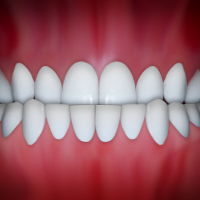
An underbite is characterized by the lower jaw extending too far out, causing the lower front teeth to sit in front of the upper front teeth.
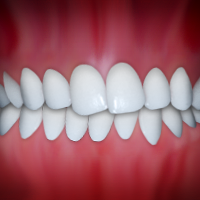
This orthodontic problem occurs when the upper teeth sit inside the lower teeth, which may cause tooth stratification and misaligned jaw growth. In order to close the mouth, patients usually move their lower jaw forward or to the side when closing. This incorrect bite results in an improper use of the lower jaws and can lead to facial asymmetry.

This type of malocclusion is characterized by the upper teeth extending too far forward or the lower teeth not extending far enough forward.
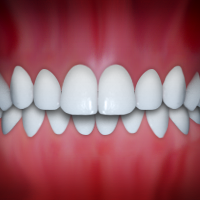
The upper front teeth extend too far out over the lower front teeth, sometimes causing the lower front teeth to bite into the roof of the mouth. This type of bite can lead to a “gummy” smile, protruding lips and excessive incisor wear.
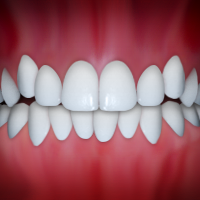
Crowding occurs when teeth do not have enough room to erupt from the gums. This is the most common reason for braces. Crowding has been linked to periodontal problems and dental decay because it is harder to clean overlapping teeth’s surfaces.
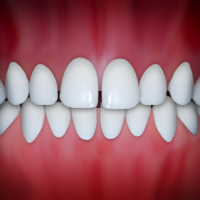
Spacing problems can be caused by missing teeth or could be a solely cosmetic issue. Spacing is another popular reason for braces. Spacing is most commonly caused by excessive jaw room for the size of the erupting teeth.
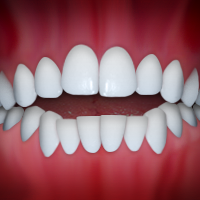
In this type of bite, the upper and lower front teeth do not overlap. Openbite can lead to a number of unwanted habits, such as tongue thrusting or thumb sucking. An early evaluation and intervention are essential in correcting an openbite.
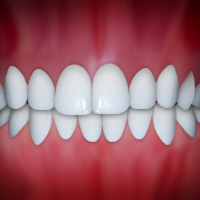
Dental midlines that do not match are evident when the back bite does not fit and match appropriately. This can negatively impact jaw function and proper dental function.
Today is an important day where a lot of decisions will be made. We will make a plan on how to treat any problems we find. This will include deciding whether we should begin now or wait until a later time. Our procedure starts by taking a set of regular photographs of the teeth in their present state. Next, we’ll probably take a series of radiographic (X-ray) images. These enable us to see what’s going on underneath the gums: the position and growth of bones and joints, and the teeth that are still below the gum line.
In some cases, we may also take an impression (mold) of the teeth. This allows us to make an exact replica of the bite, which helps us understand exactly what the problem is and how best to treat it. If we require an impression of diagnosis, we will ask you (or your child) to bite down on some soft putty-like material for a few moments; then we’ll remove it and make the mold in our lab.
After that, it’s time for the actual exam. We will look at the records and images, and perform a careful examination. Besides looking in the mouth, the doctor may also ask questions, such as whether the jaws make noise when the mouth is opening or closing, or if there are any problems chewing or swallowing. Taken together, this information will allow the doctor to make a proper diagnosis and finalize our treatment plan at the first visit.
Following the exam, we may conclude that things are just fine or, that you need treatment. We may recommend that you begin right away or at a later time, depending on the developmental stage of your teeth and jaws. Many times, we’ll advise you to return for a periodic checkup, until we determine that it’s the best time to start. Now that we have a treatment plan, we will also explain what our fees will be, and what payment options are available for you.
Whether you’re starting now or later, this is the best time to ask all the questions about the process. We can talk about available treatment choices, answer general questions about what to expect at the different stages of the process, and discuss any of the following:
When you leave our office, we think you’ll have a better understanding of how we can help you achieve the best possible smile. Don’t delay your visit anymore, call us today to schedule your initial consultation!
Dr. Stephen Haverkos grew up next door to Dr. Reddy and his family. He attended Our Lady of Visitation followed by Elder High School. While in high school Steve was a patient of Dr. Reddy so he knows the value of his outstanding care.
After graduating from high school, Steve accepted an academic scholarship to attend the University of Cincinnati College of Engineering. He was an engineering co-op at Johnson and Johnson in Blue Ash and graduated magna cum laude with a B.S. in Biomedical Engineering. Immediately following, Steve accepted a position at Procter and Gamble in Cape Girardeau, MO as a power and controls engineer and project manager. He managed large construction teams for industrial manufacturing installations. He was promoted and relocated back to Cincinnati where he continued to manage construction projects across the country. He was grateful for his experience at P&G, however after four years he decided to pursue a career that he believed would be more fulfilling. He attended dental school at University of Kentucky College of Dentistry, located in Lexington, KY. He earned his Doctor of Medicine in Dentistry (DMD) in 2017. He completed a Postgraduate Orthodontic and Dentofacial Orthopedics Residency Program from Virginia Commonwealth University in Richmond, VA.
While in residency, Steve served as an orthodontic resident at Children’s Hospital of Richmond in the Craniofacial Center program working with kids with craniofacial developments. Steve passed his American Boards of Orthodontics exam in residency. This is the first step to becoming board certified.
Beyond traditional orthodontics, Steve is experienced with Invisalign, complex interdisciplinary cases, soft tissue lasers, temporary skeletal anchorage devices, orthognathic surgical setups, tooth movement acceleration utilizing micro-osteoperforation, and 3-D printing technologies. Steve leveraged his engineering background to design a new orthodontic bracket with reduced friction to enable more efficient orthodontic care for his master’s thesis.
Steve and his wife Stephanie live on the west side with their three children and three rescue dogs. Steve enjoys spending time with family trying out new restaurants, breweries, and the outdoors. He also enjoys brewing beer, playing golf, dog rescue, and riding bikes.
It is a dream come true for Steve to be working with his former next door neighbor and family friend Dr. Reddy. He looks forward to meeting and working with all of the patients on the west side.
Dr. Tim Reddy was awarded an Evans Scholarship to The Ohio State University and graduated with a Bachelor of Science Degree in 1975. He continued his studies at The Ohio State University College of Dentistry and received his Doctorate of Dental Surgery degree with Honors in 1979. He was awarded membership in the Omicron Kappa Upsilon Honorary Dental Society.
Dr. Reddy was commissioned as a captain in the United States Army Dental Corps in 1979. He continued his post-doctorate education at William Beaumont Army Medical Center, completing a residency in general dentistry in 1980. Dr. Reddy served our country for the next six years while stationed at Ft. Carson, Colorado and Bad Kreuznach, West Germany. He practiced all aspects of dentistry, caring for our soldiers and their families.
In 1986, he returned to Ft. Knox, Kentucky to pursue post-graduate specialty training in orthodontics at the University of Louisville. He completed his specialty training and research thesis receiving his specialty certificate in orthodontics and Master of Science degree in 1988.
Dr. Reddy moved to Ft. Bragg, North Carolina where he served as staff orthodontist and mentor/lecturer in the Post Doctorate General Dentistry Residency Training Program. During his military service, Dr. Reddy received many awards and honors, including:
In 1990, Dr. Reddy decided to leave the military to dedicate all his energy to the clinical practice of orthodontics. He returned home to the west side of Cincinnati in June 1990 and entered private practice. Dr. Reddy is Board Certified and attained Diplomate of the American Board of Orthodontics status in 1998.
Dr. Reddy is a member of the:
Dr. Reddy and his wife, Yvonne, live in Green Township. They have three children, Andrea, Lisa and Daniel.
Error: Contact form not found.
Lorem ipsum dolor sit amet, consectetur adipiscing elit. Nulla bibendum quis est sit amet blandit. Donec lacus tortor, pharetra id massa sed, varius cursus elit. Aliquam erat volutpat. Nam vitae finibus metus. Morbi vel magna pulvinar, commodo dolor non, pulvinar turpis. Morbi felis dui, aliquet eu rutrum sed, lacinia ut lectus. Integer in diam justo.
Nulla dolor nulla, pharetra vitae suscipit sit amet, sagittis ac neque. Suspendisse blandit, velit quis imperdiet tincidunt, arcu nibh luctus ipsum, vitae sollicitudin metus dui ut risus. Cras a tincidunt nisi, eu commodo erat. Proin condimentum in metus in semper. Pellentesque tristique nulla enim. Nulla ut felis vitae tellus auctor rutrum eu non ipsum. Sed eget nisl in felis vehicula ultricies eu quis mi. Mauris a ullamcorper libero, nec sollicitudin sapien. Nulla vestibulum mi ullamcorper porttitor tincidunt.
Vestibulum ante ipsum primis in faucibus orci luctus et ultrices posuere cubilia Curae; Pellentesque bibendum metus eget ex tempus scelerisque. Pellentesque egestas laoreet luctus. Vestibulum enim lorem, condimentum a ex non, interdum eleifend nulla. Morbi congue, tortor eu auctor varius, sem diam tristique quam, et venenatis libero mauris et felis. Phasellus congue pulvinar turpis imperdiet condimentum. Donec eleifend placerat leo, non interdum nisl venenatis quis. Praesent pellentesque nibh eros, vitae hendrerit odio volutpat eu. Donec sodales aliquam leo, vitae euismod arcu laoreet vel.
With Damon braces, we can achieve a terrific end result and finish your treatment faster. Depending upon your specific case, this can translate to a beautiful smile months sooner than with traditional braces. After analyzing your specific needs, we will be able to provide you with a treatment plan that will have you smiling as soon as possible.
Damon braces are very precise and effective. With this system, we can reduce the need for many of the time-consuming, complicated procedures that are used with traditional braces.
Because Damon braces eliminate the need for elastic ties, fewer adjustments are required. As a result, your appointments can be spaced out further, early in treatment, and will take less time.
Due to the unique design, we can move your teeth into their correct positions with greater comfort than traditional braces. Also, Damon braces are aesthetic, comfortable, and easy to keep clean.
